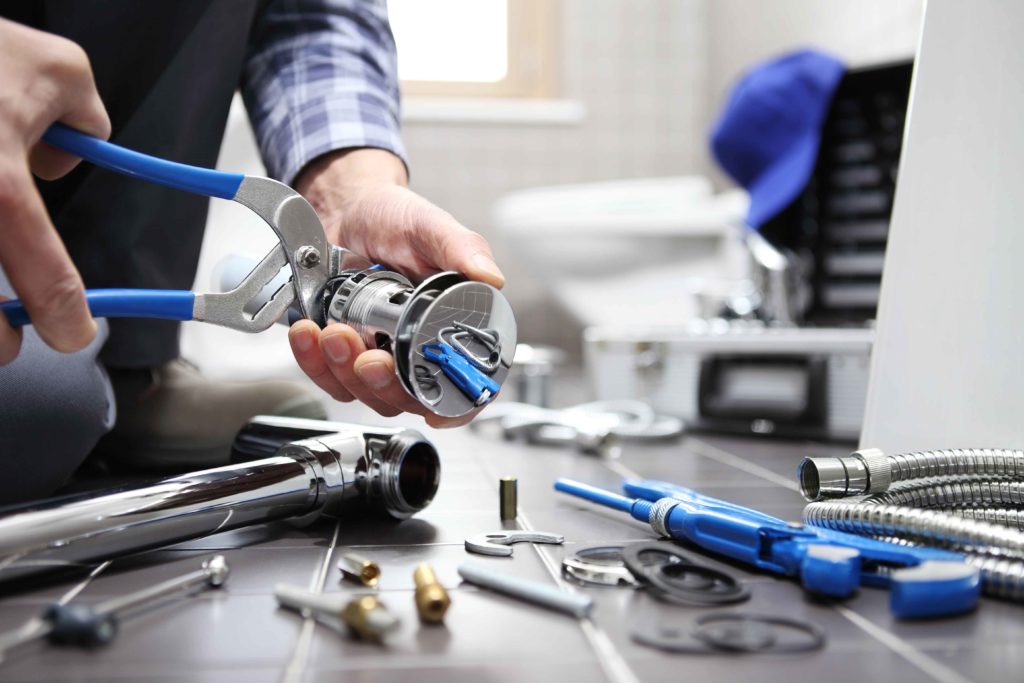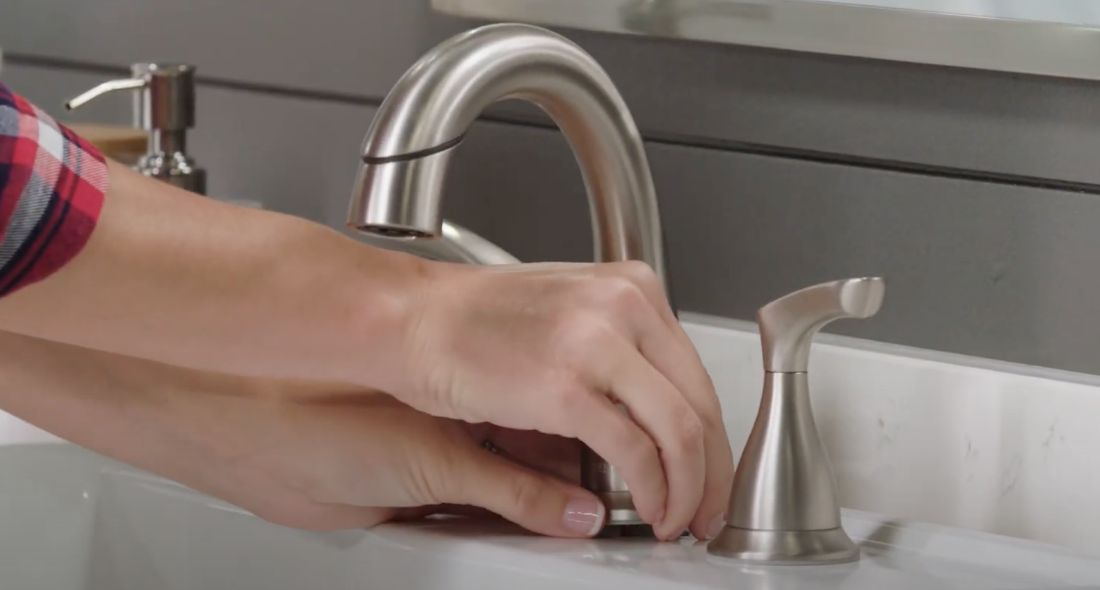What It's Needed to Deal with a Leaking Faucet
What It's Needed to Deal with a Leaking Faucet
Blog Article
We have stumbled upon the article on How to Fix a Dripping or Leaky Faucet listed below on the net and reckoned it made sense to discuss it with you on my blog.

Trickling faucets may appear like a minor inconvenience, but their effect surpasses simply the nuisance of the noise. From drainage to sustaining unnecessary monetary prices and wellness risks, disregarding a trickling faucet can lead to various effects. In this post, we'll delve into why it's crucial to address this common household issue promptly and effectively.
Wastage of Water
Ecological Influence
Trickling taps contribute dramatically to water wastefulness. According to the Epa (EPA), a single faucet trickling at one drip per secondly can lose more than 3,000 gallons of water per year. This not just stress water resources yet additionally impacts communities and wild animals based on them.
Financial Costs
Raised Water Expenses
Past the ecological impact, leaking faucets can pump up water bills significantly. The accumulated wastage gradually translates into greater utility costs, which can have been avoided with prompt repairs.
Prospective Property Damage
Moreover, prolonged leaking can bring about damage to fixtures and surfaces bordering the tap. Water buildup can create staining, corrosion, and even structural problems if left ignored, resulting in additional repair work expenses.
Health and wellness Worries
Mold And Mildew and Mildew Growth
The continuous existence of moisture from a dripping faucet creates an ideal environment for mold and mildew and mildew growth. These fungis not only compromise indoor air top quality however additionally posture health and wellness risks, particularly for individuals with respiratory system problems or allergic reactions.
Waterborne Diseases
Stagnant water in dripping faucets can become a breeding ground for bacteria and other pathogens, increasing the danger of waterborne diseases. Contaminants such as Legionella microorganisms grow in stationary water, potentially leading to serious ailments when ingested or inhaled.
Do it yourself vs. Expert Repair
Benefits and drawbacks of DIY Fixing
While some might try to take care of a dripping tap themselves, do it yourself repair services come with their own collection of challenges. Without appropriate understanding and devices, DIY attempts can aggravate the issue or cause insufficient repairs, extending the trouble.
Advantages of Hiring a Specialist Plumber
Working with a professional plumber guarantees that the underlying reason for the leaking tap is attended to properly. Plumbings possess the proficiency and tools to identify and repair tap problems effectively, saving time and decreasing the danger of further damages.
Step-by-Step Guide to Fixing a Dripping Tap
Tools Called for
Before attempting to take care of a leaking faucet, collect the necessary devices, including a flexible wrench, screwdrivers, replacement parts (such as washing machines or cartridges), and plumber's tape.
Common Tap Issues and Their Solutions
Determine the kind of tap and the particular concern triggering the drip. Usual problems include damaged washing machines, corroded shutoff seats, or defective O-rings. Refer to manufacturer guidelines or on the internet tutorials for step-by-step support on repair work.
Safety nets
Regular Upkeep Tips
To prevent leaking taps, do routine maintenance such as cleaning aerators, inspecting for leakages, and changing worn-out parts without delay. Additionally, take into consideration setting up water-saving devices or updating to extra effective fixtures.
Relevance of Prompt Fixes
Addressing leaking taps as soon as they're observed prevents further water wastage and possible damage, ultimately conserving both water and money in the long run.
Influence On Residential Or Commercial Property Worth
Understanding of Well-Maintained Residential Or Commercial Property
Keeping a building in good condition, including addressing upkeep concerns like leaking taps, improves its perceived value and worth among prospective buyers or renters.
Impact on Resale Worth
Qualities with properly maintained plumbing fixtures, including taps, command greater resale values in the real estate market. Resolving dripping faucets can contribute to a favorable impact throughout residential or commercial property evaluations and settlements.
Ecological Obligation
Private Payment to Preservation
Taking obligation for taking care of leaking taps lines up with wider efforts toward water conservation and environmental sustainability. Every person's activities collectively make a considerable impact on preserving priceless sources.
Sustainable Living Practices
By prioritizing punctual repair services and taking on water-saving routines, individuals add to lasting living techniques that benefit both present and future generations.
Final thought
Dealing with a trickling tap surpasses mere comfort; it's a necessary step towards saving water, reducing monetary costs, and securing health and property. Whether with do it yourself repairs or expert aid, acting to take care of dripping faucets is a little yet impactful means to advertise responsible stewardship of resources and add to a much healthier, more sustainable future.
How to Fix a Dripping or Leaky Faucet
A leaking faucet is one of the most common problems that homeowners encounter, but it being commonplace doesn’t make it any less annoying. The constant drip drip drip of a leaking bathtub faucet, showerhead, or sink tap can disturb your home’s serenity. Left neglected, a dripping faucet can also result in higher water bills and discoloration or mold growth in your sink or plumbing fixtures.
Fortunately, you don’t have to be a trained plumber to know how to stop a dripping faucet. With some basic tools, replacement parts, and a little patience, leaky faucet repair is a breeze. In this article, we’ll explain what causes dripping faucets and how you can fix them.
What Causes a Leaking Faucet?
Kitchen and bathroom faucets come in all manner of designs, but most involve some combination of valves, O-rings, seals, and washers. The O-ring is usually the weakest link, but any one of these pieces can wear down over time. Heat, moisture, temperature fluctuations, minerals, mold, and movement can contribute to warping and corrosion, breaking the watertight seal. This just comes with the territory of being a homeowner. Everything is always subject to wear and tear, and some component parts of your appliances and fixtures need to be replaced on occasion. At least replacement O-rings are cheap!
More rarely, dripping faucets can be a symptom of excessively high water pressure. Were this the case in your home, you would probably notice that the leak is not isolated to one faucet. Water pressure issues are harder to resolve on your own. We recommend contacting a professional plumber if you suspect your water pressure is too high.
How to Fix a Dripping Faucet
Pipe wrench or monkey wrench Allen wrench set Screwdrivers Old towel or rag Shut off the water.
Before you do anything, you need to turn off the water to keep from drenching your kitchen or bathroom. You should find a valve under the sink and against the wall. Once you’ve turned this valve, try turning the faucet on to confirm that the water source has been cut off.
If you can’t locate your local valve for the faucet you’re working on, you can always shut off the water to the house at the main valve. Of course, this will prohibit anyone from using the sinks, showers, or toilets while you’re working on the faucet that’s giving you trouble.
Plug or block the drain.
You’ll be disassembling the faucet and removing some small bits of hardware. Plug the drain with a stopper or rag to avoid the possibility of a small screw falling into your P-trap.
Take apart the faucet assembly.
There are several varieties of kitchen and bathroom faucets, each with its own manner of assembly. For detailed instructions on how to disassemble your faucet, you can refer to the fixture’s manual or contact the manufacturer. If you know whether you have a ball, disc, cartridge, or compression faucet, you can find detailed schematics online.
In general, you need to begin by removing the faucet handles. You might notice a small screw that you’ll need to remove with a screwdriver or Allen wrench. If you don’t see any visible securing hardware, it’s likely hidden under a decorative cap that can be unscrewed or popped off with flathead screwdriver.
Remove each piece methodically, consulting a schematic when necessary. Take notes or arrange the pieces in such a way to make it easier to correctly reassemble the faucet later.
Remove the cartridge.
Once you’ve removed the handles and securing hardware, you should be able to remove the valve cartridge or stem. Some cartridges will slide right out. Other faucet models will require you to loosen a nut with a pipe wrench before you can remove the valve stem.
Examine the exposed hardware.
With the cartridge or stem removed, inspect the component parts. Check the rubber O-rings for wear and tear. Also examine the seat washer for corrosion or other damage. These pieces are usually the responsible parties for a dripping faucet, but it’s worth inspecting the other component parts while you have the faucet disassembled.
Find replacement parts.
Once you’ve identified which faucet component has failed, find an identical replacement. Your local hardware store should have O-rings, seat washers, and other standard components in stock. If you have a luxury or uncommon faucet, you may have to contact the manufacturer for a replacement part.
It’s a good idea to take your old parts with you to the hardware store so you can compare them with the store’s inventory and be sure you’re purchasing the correct replacement.
Reassemble the faucet.
With your new parts in hand, reconstruct the faucet and handles. Don’t be tempted to overtighten screws or nuts. You might think this could create a better seal, but it can instead damage or bend a delicate part of the assembly and create a new problem for you.
Turn on the water and test the faucet.
The only thing left to do is test your work. Unplug the sink, turn the water back on, and try the faucet. Congratulate yourself on a job well done!
https://www.libertyhomeguard.com/how-to-fix-a-dripping-or-leaky-faucet/

Do you enjoy reading about Why It's Important to Fix Leaky Faucets? Leave a remark down the page. We'd be pleased to see your thinking about this posting. We are looking forward that you visit us again later on. You should pause to share this post if you enjoyed reading it. Thank you for going through it.
Report this page